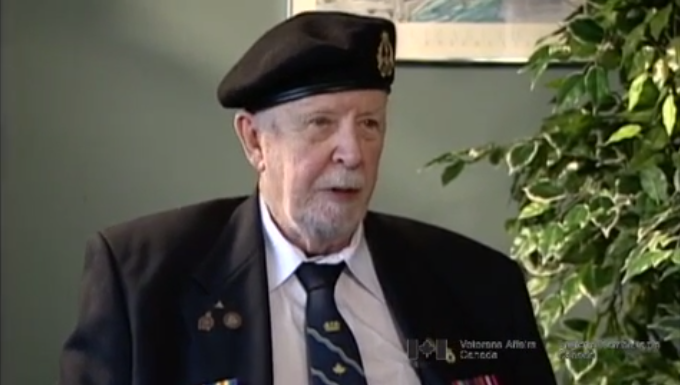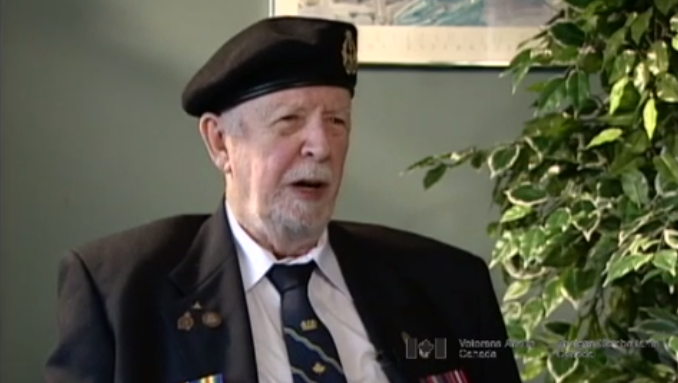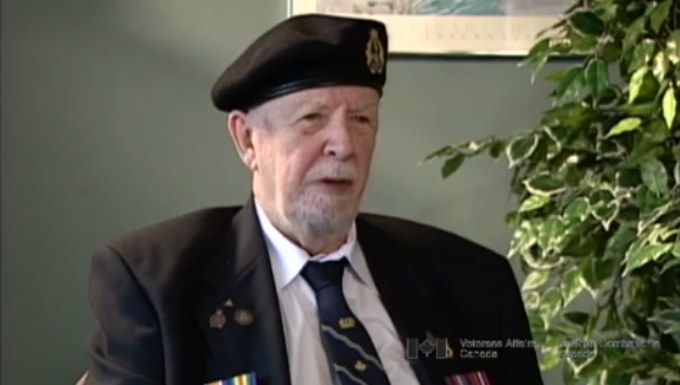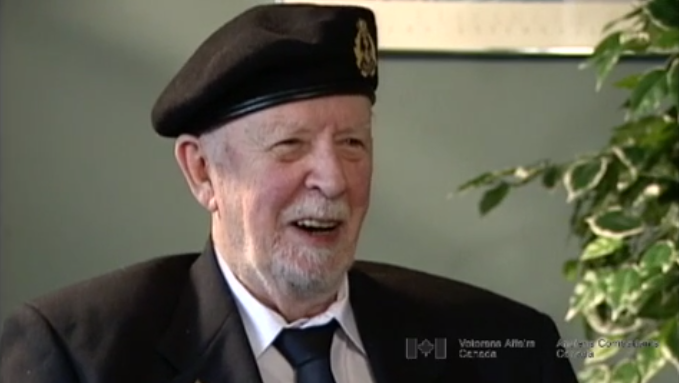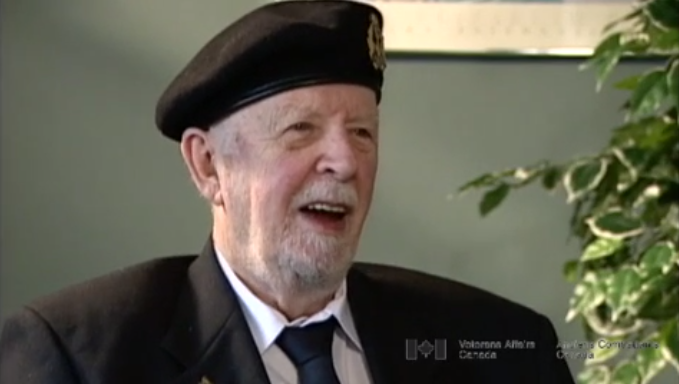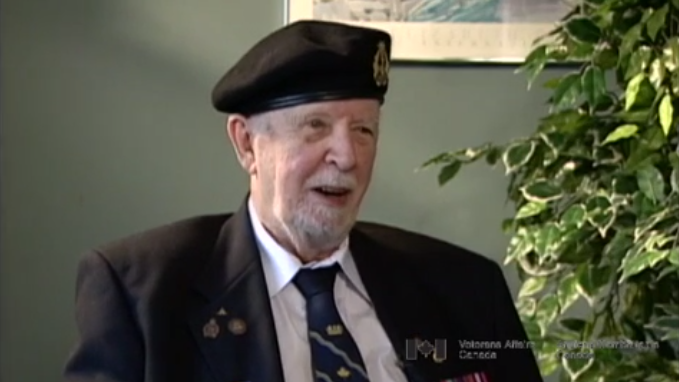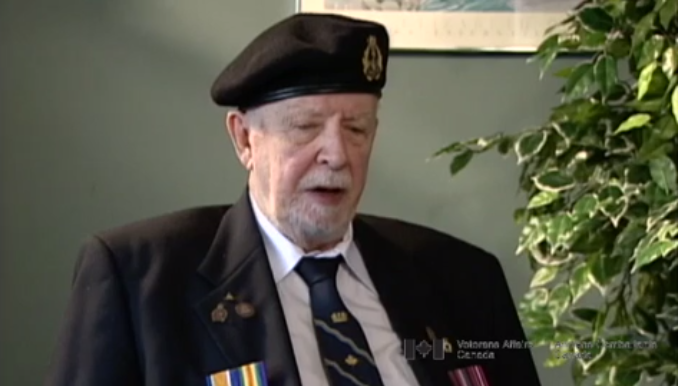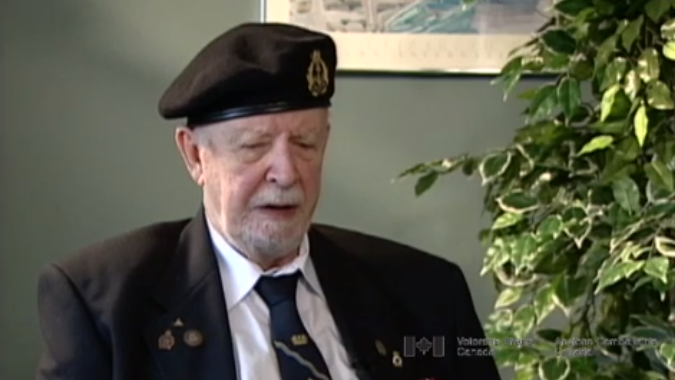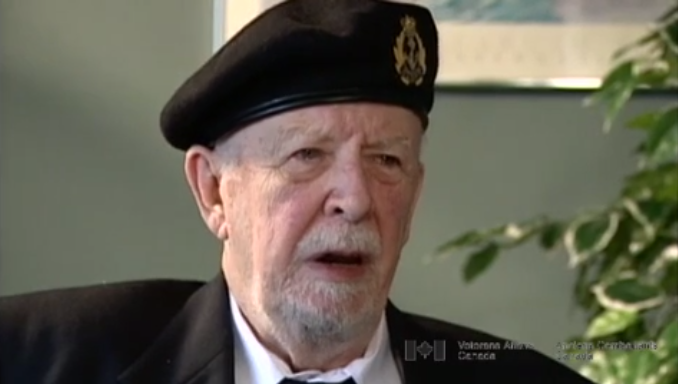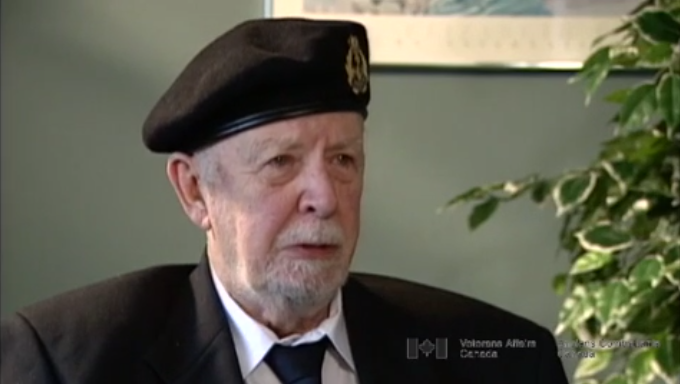Why The Navy?
Heroes Remember
Why The Navy?
Well, we we’re actually quite a seafaring family. My
grandfather and great-grandfather were both captains of the
largest schooner that ever sailed the Great Lakes. That was the
schooner Minnedosa, built in Kingston, Ontario. So, I had that
background, I had my time at the …on the Great Lakes. Well it
certainly wasn’t … I didn’t join it to see the world, because
the world consisted of water and I just felt like that’s where
I’d be at home. Kissed my grandmother goodbye and said, “I’ll
see you later, honey.” And went down, took the streetcar, walked
into the barracks and signed up, and got my uniform. And then
we were all taken on a route march to break in the boots. I was
always thankful I didn’t lace mine right up real tight because
we got blue socks, and when your feet perspired, all the dye ran
out of the socks. Well, I fixed those boots that night when I
got home. I took my baseball bat and I hammered the begeebers
out of them, except for the toes because I figured if I’m going
to drop a rifle, I want it on a boot that has some support. And
we weren’t living in barracks at the time. It was like you had
an office job. You got up at home, had your breakfast, and went
off to work wearing your uniform. And then, when you arrived at
the barracks, we had a … they paraded everybody to make sure
everybody was there. And then we went for rifle drill or route
march. The other thing we used to do was boat drill with a
Whaler, and we learned how to row the boat, the Whaler, in the
water. Now the petty officer in charge had a real smart routine
to get a bunch of raw recruits to row that Whaler in unison the
right way. He had a gimmick that we had boat races from the
barracks to the Humber Hotel. The last boat in was the one that
paid for the beer. You didn’t pay for beer very long before you
realized you had to get with it. I can’t remember the dates,
but after that, I went to the signal school in Saint-Hyacinthe,
Quebec, to complete my training as a wireless operator.
Related Videos
- Date modified:



